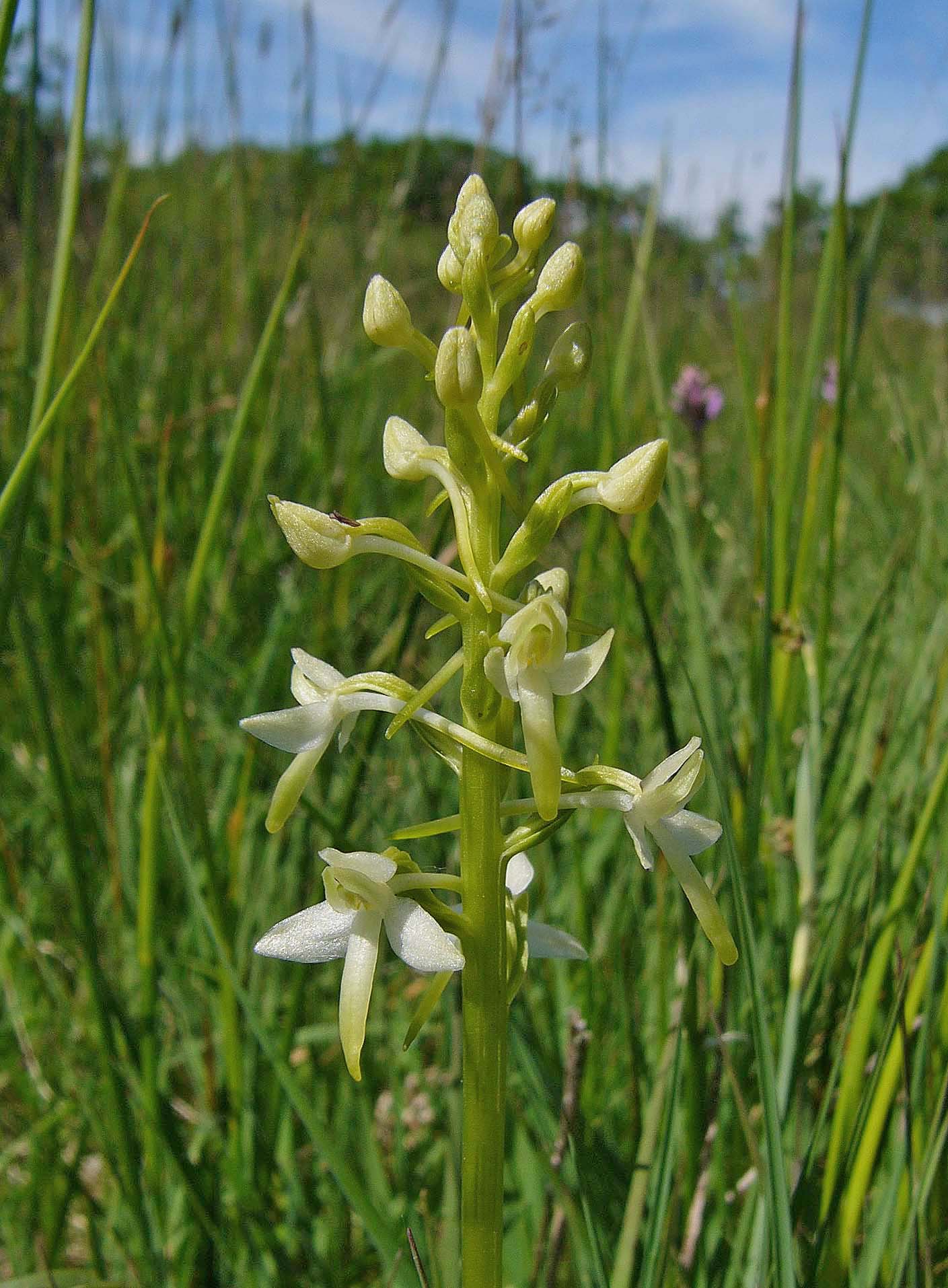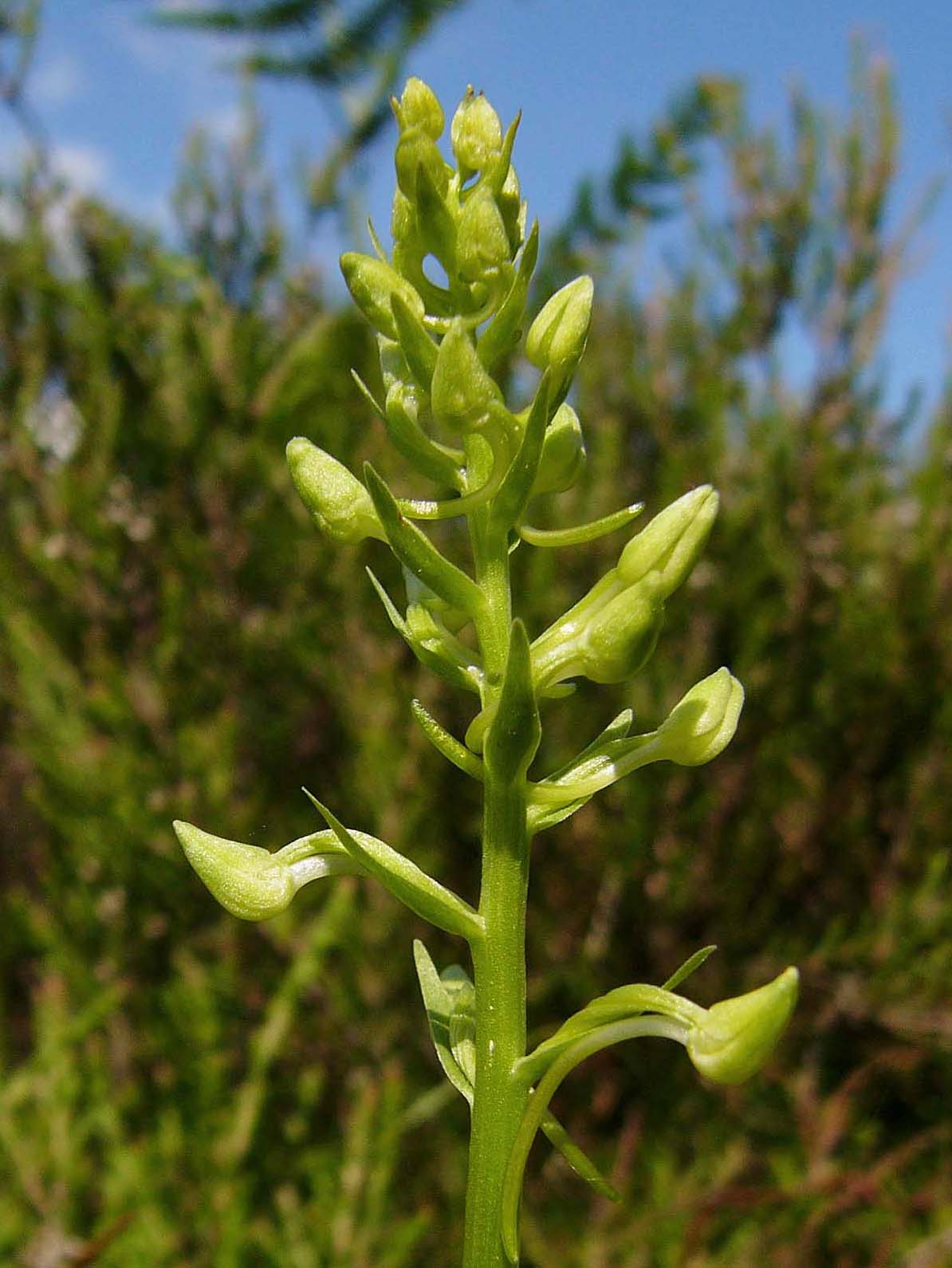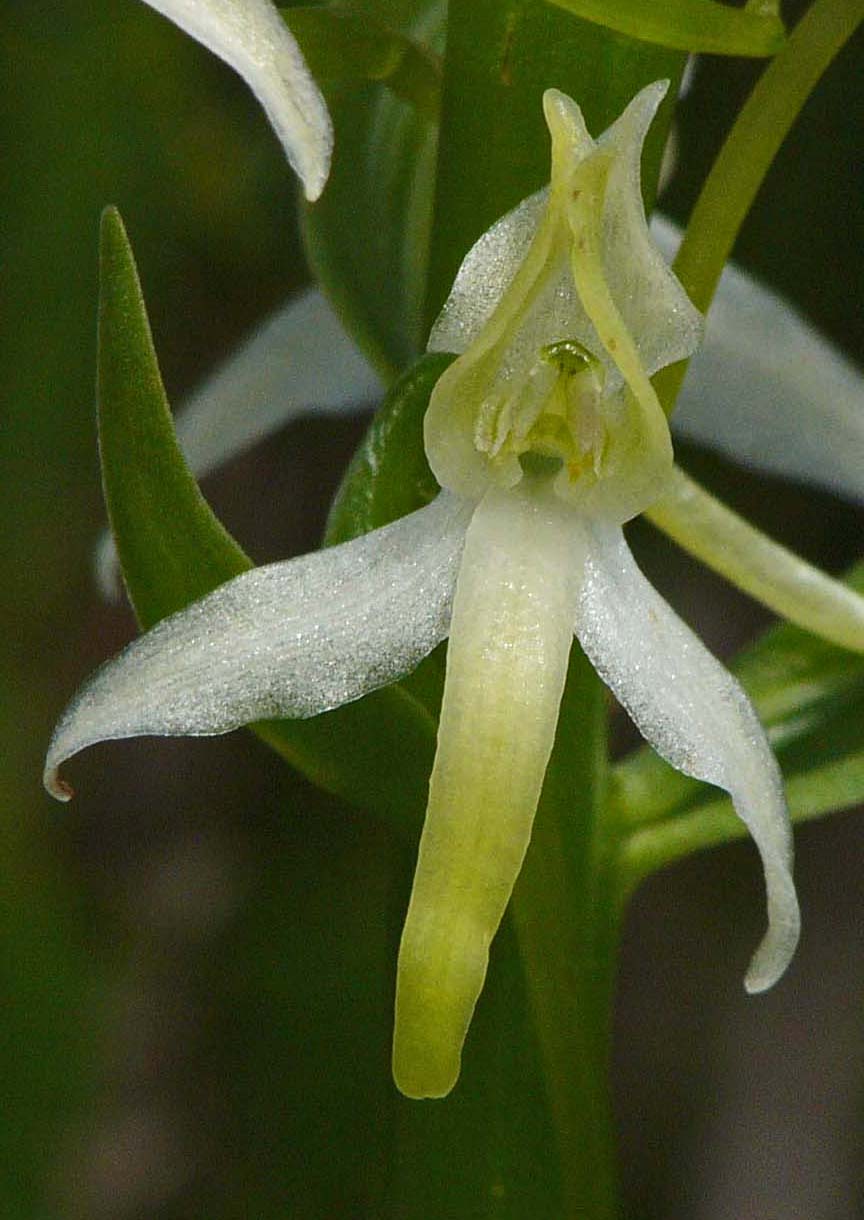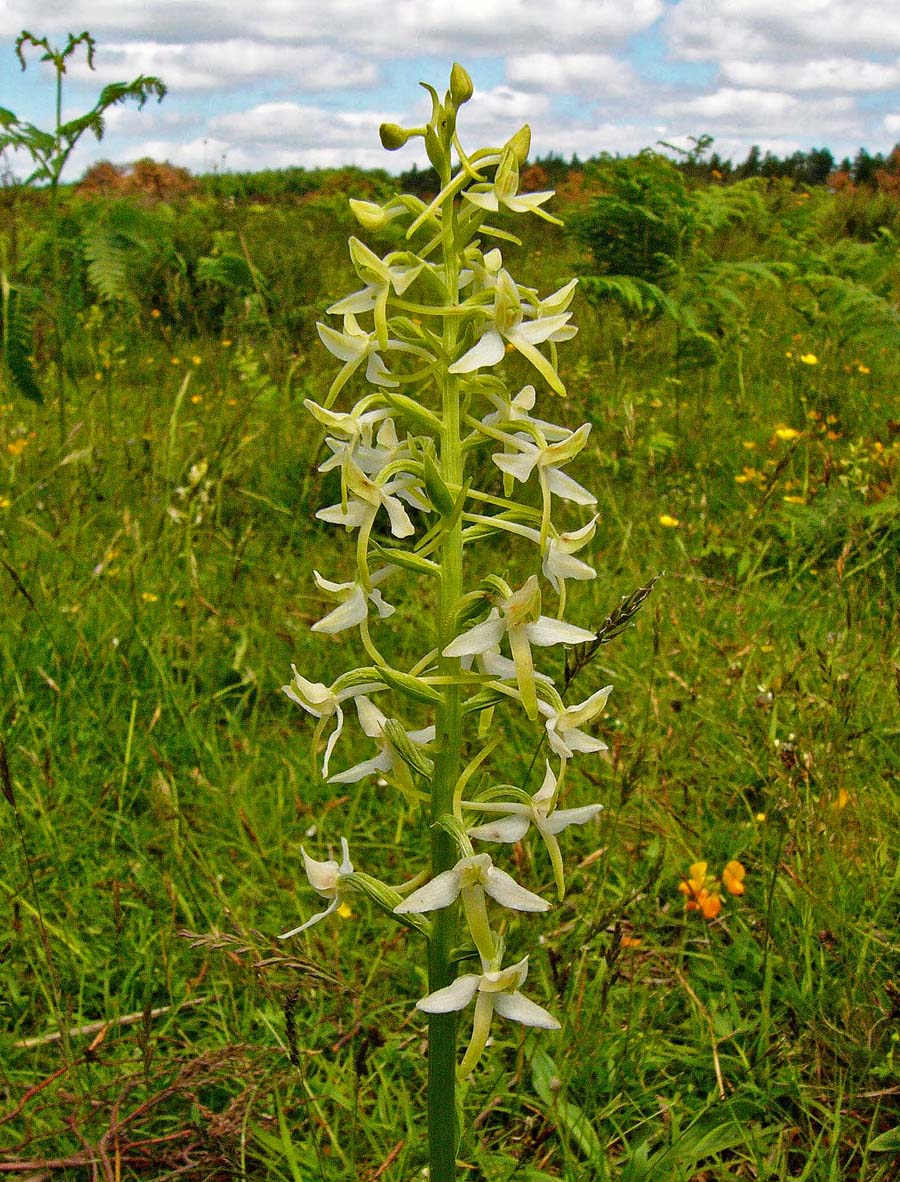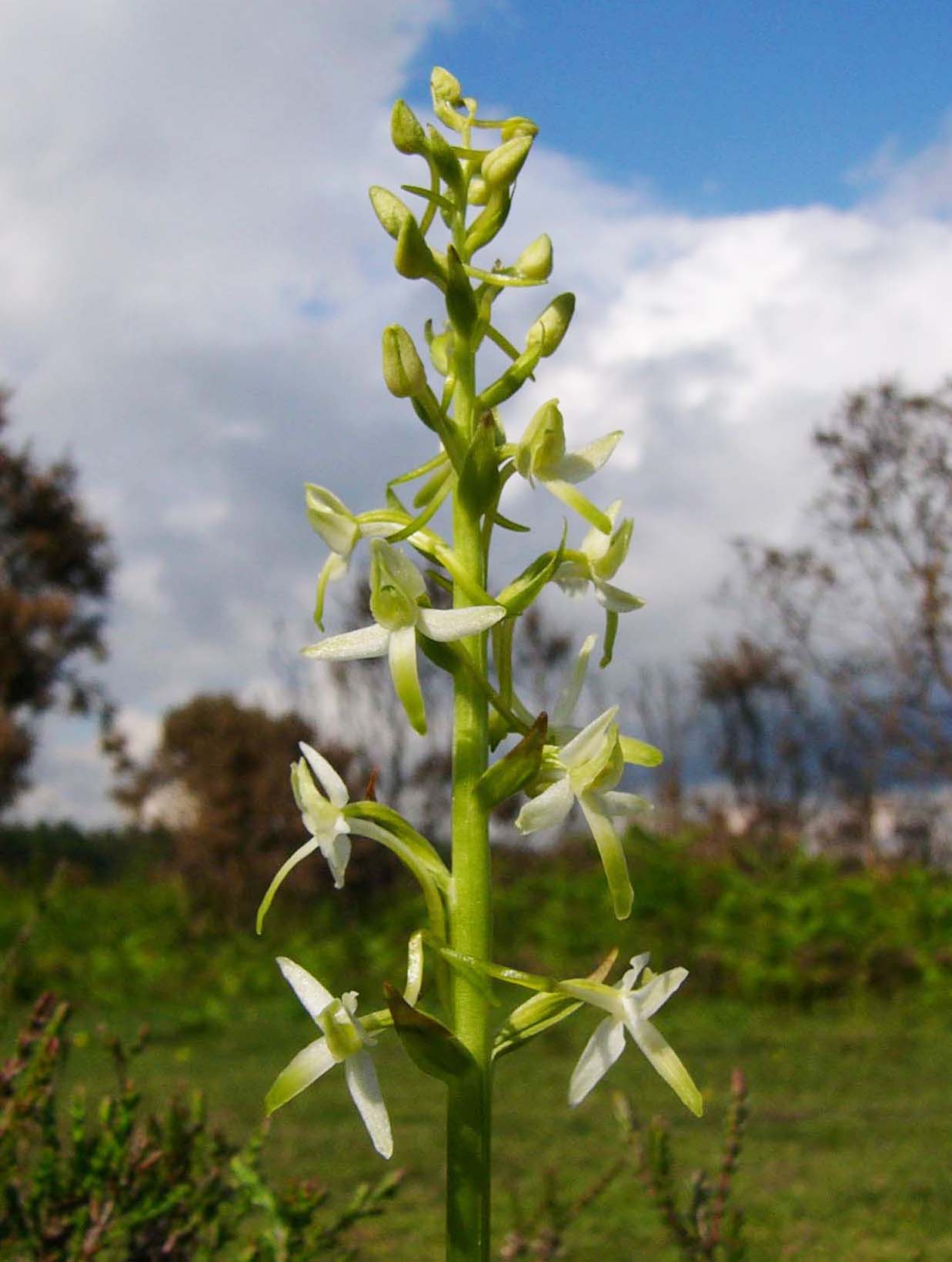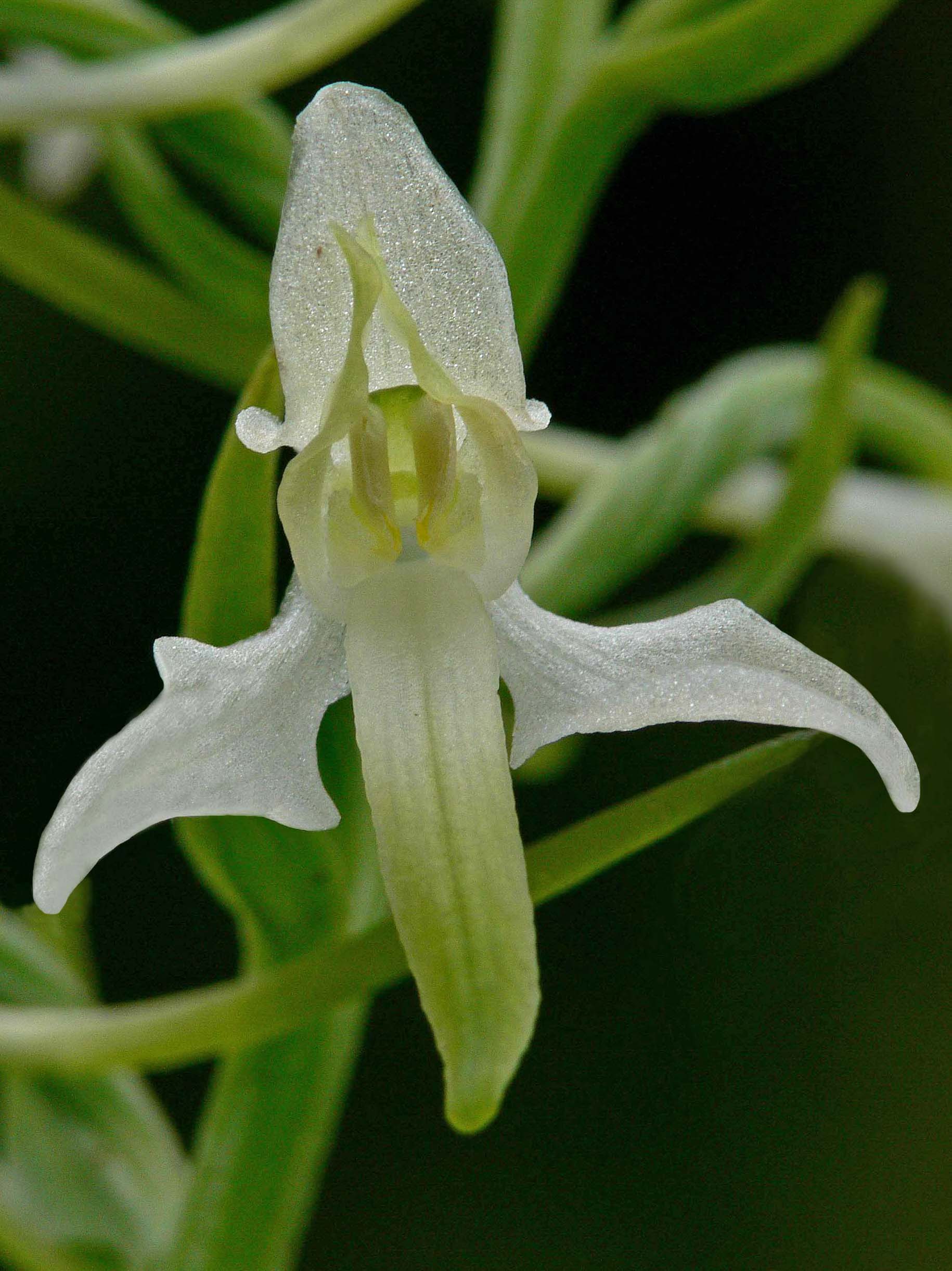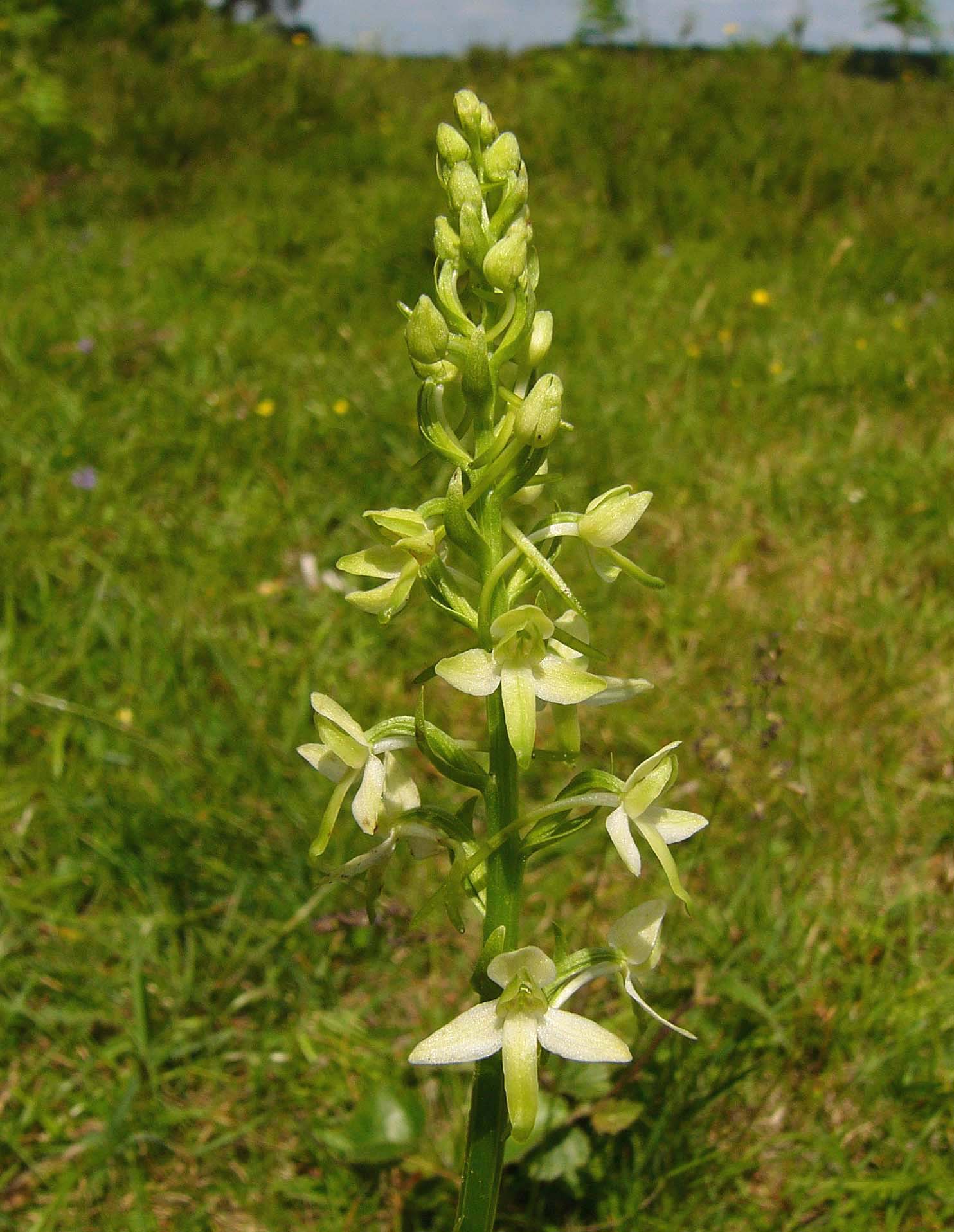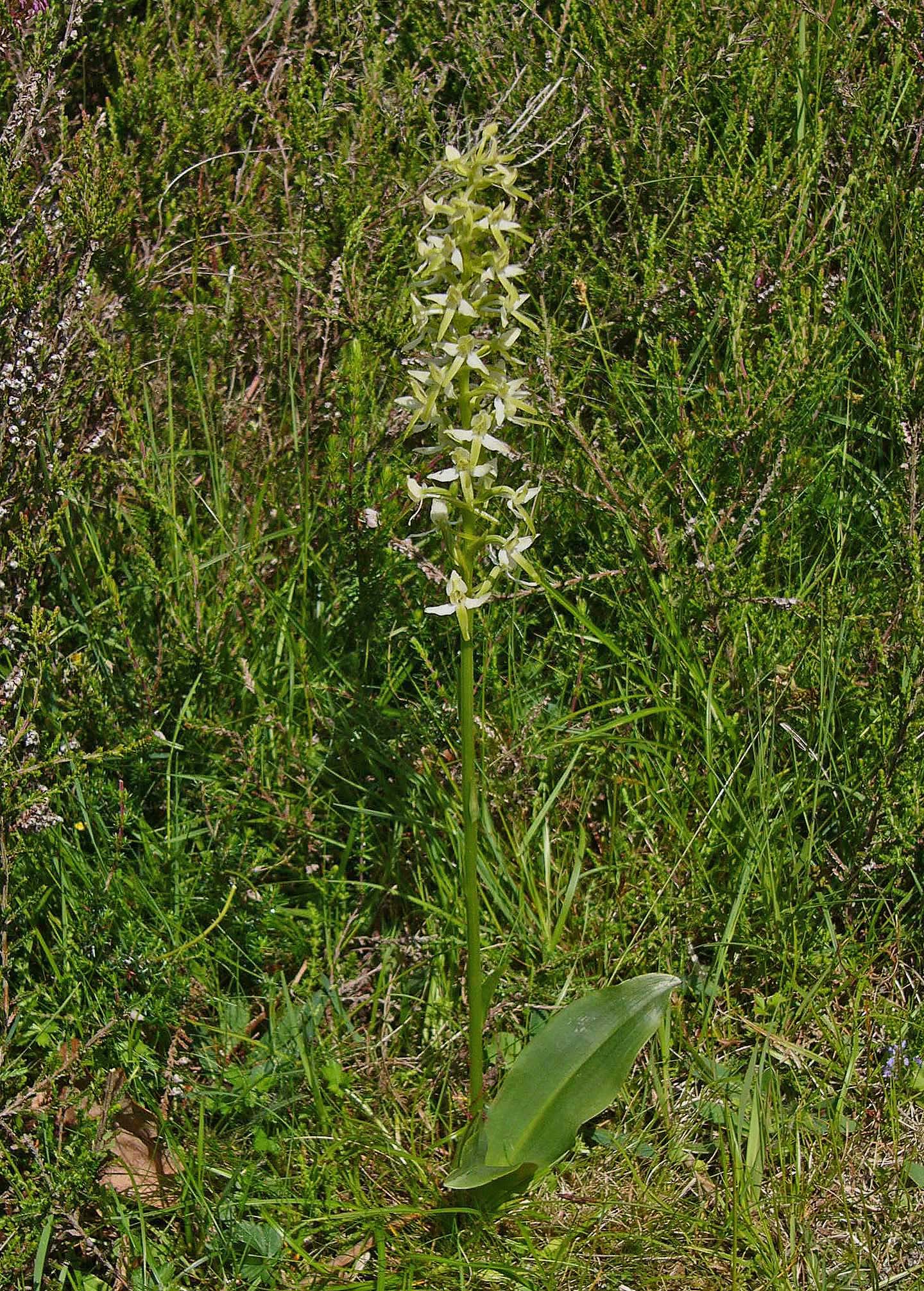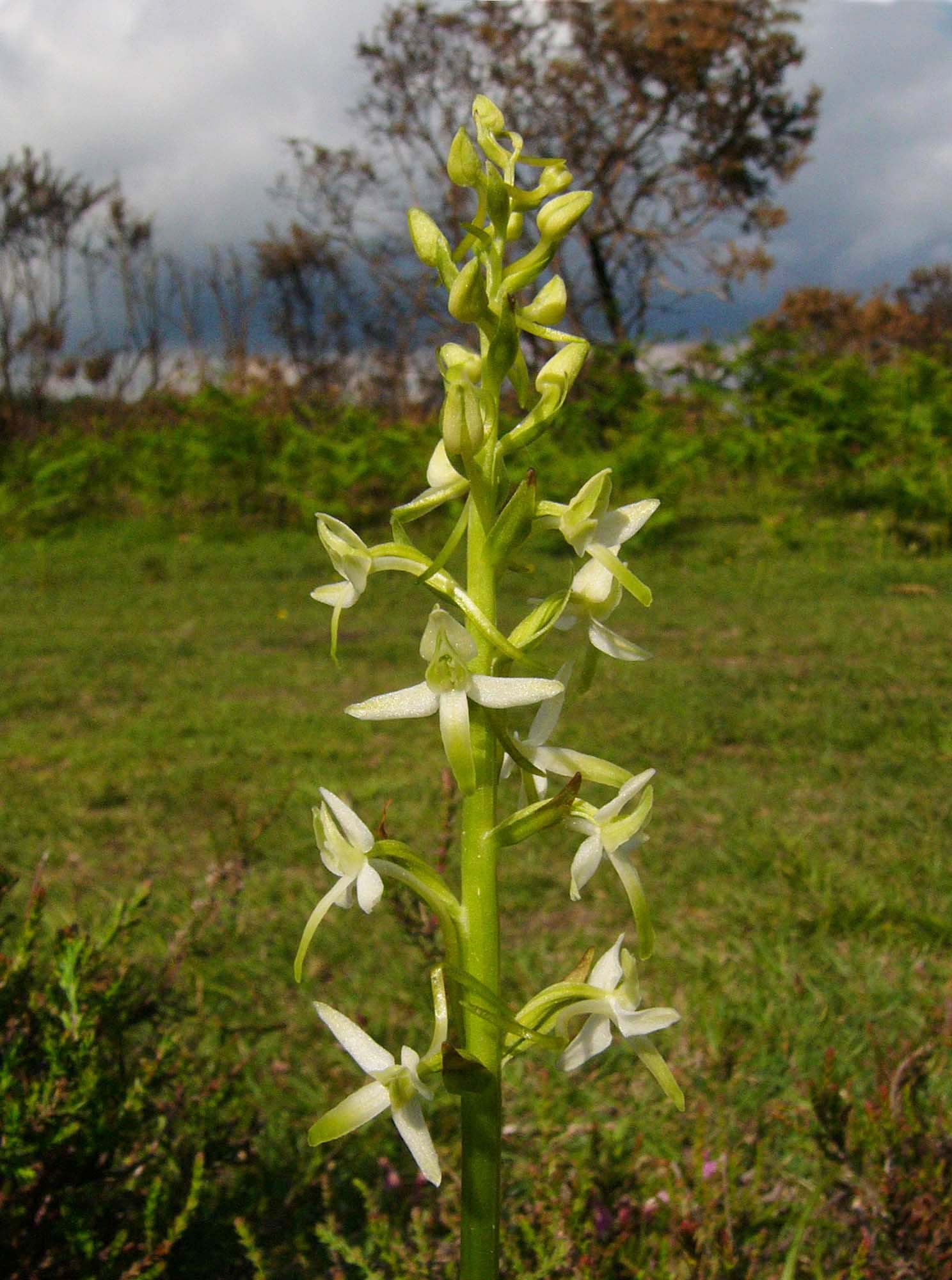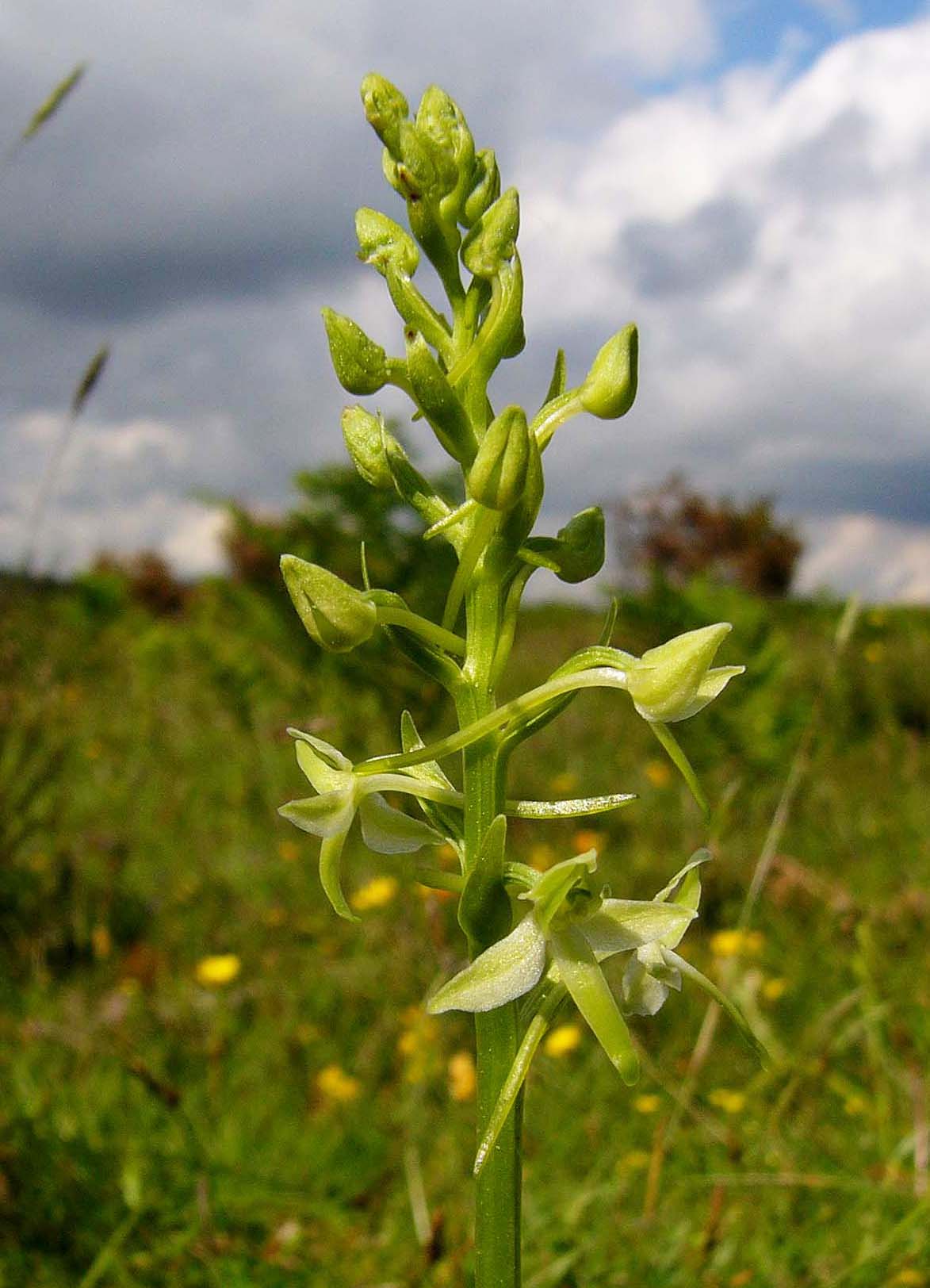P. bifolia
was first described by Richard from Zurich, Switzerland in 1753 and it
takes its name from the two leaves which form at the base of
the stem. Its widely known by its common name of the Lesser Butterfly
Orchid.
It is not a particularly variable species although varieties have been described including robusta, this being as its name implies, a sturdier plant with smaller flowers and which occurs sparingly in the more northerly areas of the species range including the British Isles. The distribution of P. bifolia is extensive and includes most of Europe and as far south as north Africa.
This a distinctive species but one which requires close inspection in order to separate it from other members of its genus. The main source of possible confusion is with its close relative P. chlorantha which is not only morphologically close but shares a very similar distribution around Europe. The main differentiating feature when comparing these two species is the positioning of the pollinia which in P. bifolia is parallel (see pic 6) and in P. chlorantha divergent, with the widest gap at the bottom. As a general rule the latter species is taller, sturdier and rarely strays from more alkaline conditions unlike the former which prefers neutral and mildly acidic soils. P. bifolia also likes damp conditions and can often be found in marshland habitats such as the Culm grasslands of north Devon, England and the Chirens marshes of southern France.
It has a long flowering period from May to August, the pictures here coming from the New Forest in southern England, dating from the second week of June.
It is not a particularly variable species although varieties have been described including robusta, this being as its name implies, a sturdier plant with smaller flowers and which occurs sparingly in the more northerly areas of the species range including the British Isles. The distribution of P. bifolia is extensive and includes most of Europe and as far south as north Africa.
This a distinctive species but one which requires close inspection in order to separate it from other members of its genus. The main source of possible confusion is with its close relative P. chlorantha which is not only morphologically close but shares a very similar distribution around Europe. The main differentiating feature when comparing these two species is the positioning of the pollinia which in P. bifolia is parallel (see pic 6) and in P. chlorantha divergent, with the widest gap at the bottom. As a general rule the latter species is taller, sturdier and rarely strays from more alkaline conditions unlike the former which prefers neutral and mildly acidic soils. P. bifolia also likes damp conditions and can often be found in marshland habitats such as the Culm grasslands of north Devon, England and the Chirens marshes of southern France.
It has a long flowering period from May to August, the pictures here coming from the New Forest in southern England, dating from the second week of June.
